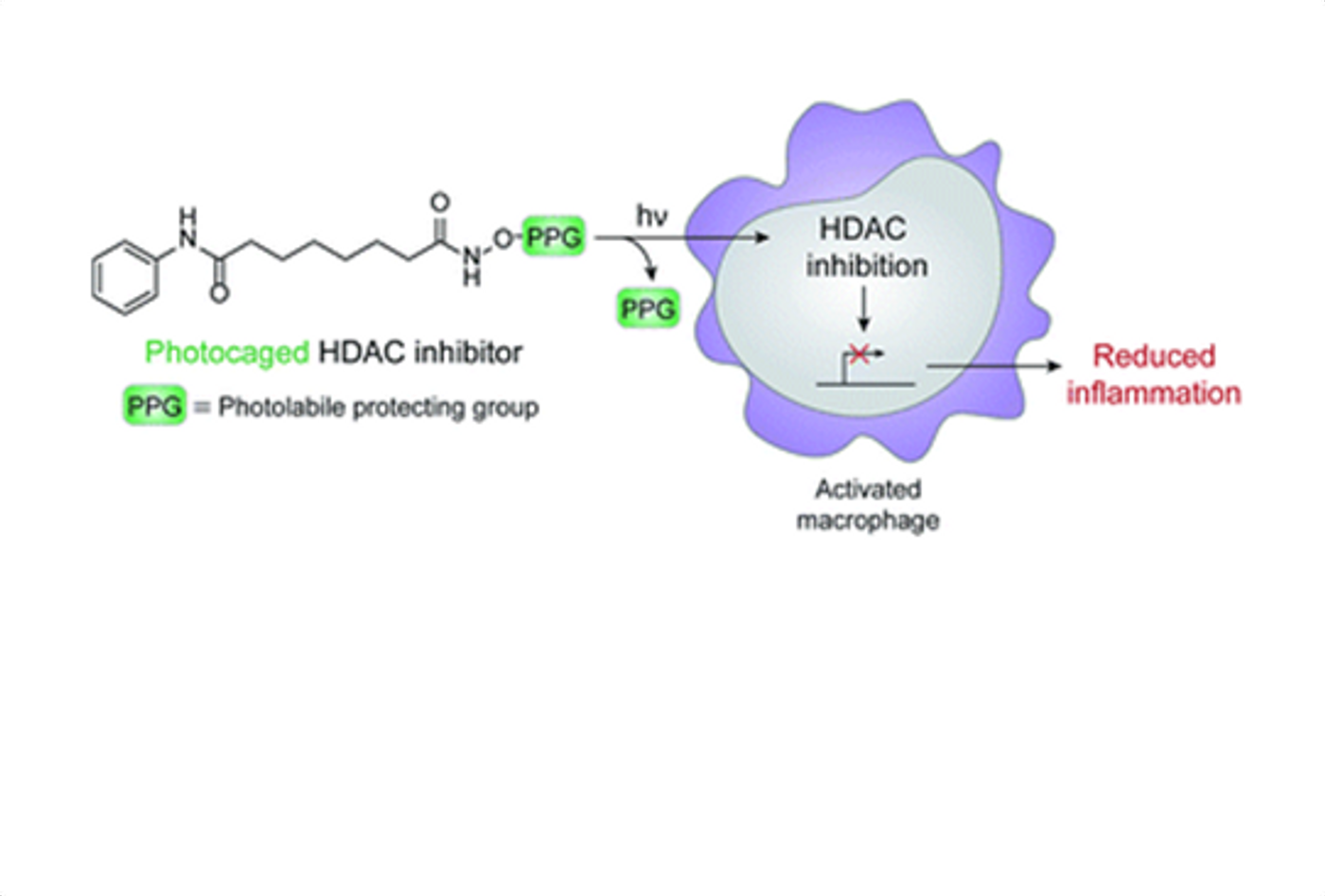Chronic inflammation can be a contributory factor in many leading causes of death, including diabetes, heart disease, and cancer. It can also be a primary cause of several severe diseases such as asthma, multiple sclerosis, rheumatoid arthritis, colitis and Crohn's disease. Researchers at Cornell University have created a chemical tool that can control inflammation in targeted tissues, which could change the process for treating chronic inflammation without harming healthy tissue.
The group led by Pamela Chang, assistant professor of microbiology and immunology, and Bibudha Parasar, a graduate student in Chang's lab, worked to find a way to inhibit certain enzyme pathways that are known to activate the inflammation reaction using UV light. The study, published in Chemical Science, could also open up new approaches to learning more about the immune system and how we can modulate other inflammation pathways.
"We are pushing the forefront of developing new technologies to control inflammation and the immune system, with the ultimate goal of being able to study these biological pathways and perhaps develop therapies for inflammatory diseases," Chang said.
The immune system is controlled by inflammatory molecules produced by immune cells such as macrophages and dendritic cells. These molecules in turn are regulated by enzymes such as histone deacetylases (HDACs) that activate and deactivate related genes to promote inflammation. The team identified inhibitors of the HDACs that suppress the inflammatory response and created a probe to specifically activate these inhibitors, but only in the presence of UV light.
An HDAC inhibitor molecule was synthesized with an attached photolabile protecting group, essentially a chemical release mechanism that is cleaved upon UV light activation which then releases and activates the attached molecule. The HDAC inhibitor can then enter an activated macrophage cell and inhibit inflammatory processes to reduce inflammation.
The UV light activation allows the chemical probe to be targeted to specific tissues. This is important because HDACs are used as regulators for other pathways in addition to inflammation regulation. If all HDACs were inhibited, there would be damage to tissues caused by inhibition of unrelated pathways in cells. By developing a system where UV light is used to target only specific areas of chronic inflammation, inflammatory diseases can be treated effectively without harming healthy tissue.
"If you turned off all the HDACs in the body, you would probably be hitting a lot of pathways that you didn't want to turn off," said Chang. "We can control when and where we turn off the HDACs using light. The idea is that you can actually target the tissue that has chronic inflammation and regulate it by selectively inhibiting HDACs in the tissue that's affected."
Sources:
Royal Society of Chemistry,
phys.org,
MedicalXpress










